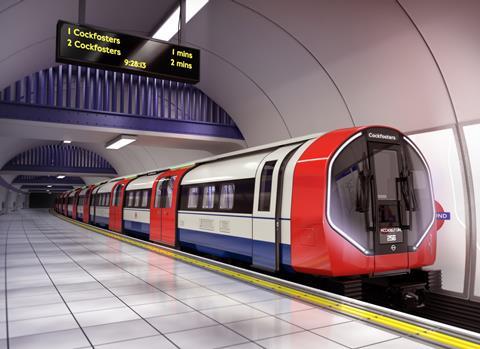
UK: Transport for London and Siemens Mobility have unveiled the detailed design for the 94 air-conditioned trainsets ordered to replace London Underground’s Piccadilly Line fleet from 2025.
TfL said the ‘state-of-the-art’ Inspiro London design presented on March 4 would ‘significantly improve’ the passenger experience. The walk-through interior of the articulated design would maximise the usable interior space, increasing capacity by 10%, offering better accessibility and enabling passengers to move along the train to find more room. Wider doors will speed up the passenger flows during boarding and alighting.
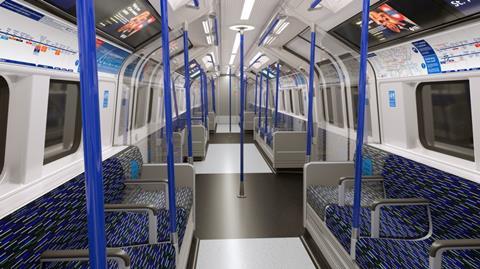
‘Behind the iconic London Underground design is a lot of innovation’, said Sambit Banerjee, Managing Director Rolling Stock & Customer Services at Siemens Mobility Ltd, noting that the company had been able to draw on its international experience.
The trains will feature air-conditioning for the first time on one of the capital’s small-profile deep-level Tube lines, which has posed a significant engineering challenge. The heat passed into the tunnels from the air-conditioning units is expected to be offset by a reduced heat output from the traction and braking equipment, given the trains’ lower energy consumption.
Energy usage is predicted to be 20% lower than the existing 1970s-built fleet, as the trains will be significantly lighter and fitted with ‘cutting-edge’ traction and advanced energy management systems. They will also have LED lighting and digital information screens with real time station and network status information.
The interiors have been developed with regular feedback from TfL’s Independent Disability Advisory Group and Accessibility Forum, with features including wide priority seats.
| Inspiro London technical data | |
|---|---|
| Train configuration | nine cars |
| Length over couplings | 113·7 m |
| Width over passenger doors | 2 648 mm |
| Height above top of rail | 2 844 mm |
| Entrance height above top of rail | 700 mm |
| Passenger capacity per train (5 passengers/m2) | 1 076 (268 seated) |
| Door width | 1 690 mm |
| Maximum traction power | 2 500 kW |
| Maximum operating speed | 100 km/h |
Frequency, reliability and capacity
The nine-car trains are due to start entering service in 2025, enabling a gradual withdrawal of the current 1973 stock, and an increase in peak frequencies from 24 to 27 trains/h from mid-2027. This would provide a 23% increase in peak capacity ahead of the long-planned but currently postponed resignalling programme.
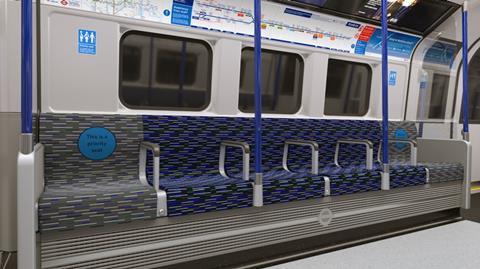
London Underground Managing Director Andy Lord said the existing vehicles were becoming increasingly unreliable and expensive to maintain. They would be 50 years old by the time they are replaced, a lifespan which ‘nobody could have imagined’ when they were delivered.
‘The much-needed new trains will be a great step forward for our city, improving frequency, reliability and capacity on the Piccadilly Line’, added Mayor of London Sadiq Khan.
Supply chain
Siemens Mobility will build half of the 94 trainsets at its plant at Wien in Austria, and half at a factory which it is developing at Goole in East Yorkshire.
This plant is expected to employ up to 700 people in engineering and manufacturing roles, 250 in the construction phase and 1 700 in the broader supply chain.
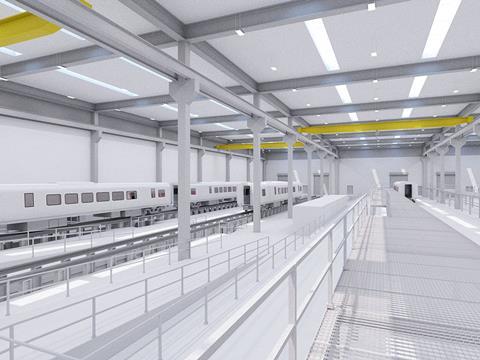
Siemens Mobility envisages that the factory could also produce commuter and high speed trains and light rail vehicles, and undertake upgrading projects.
It would be ‘much more’ than a manufacturing facility, explained Banerjee. It would be global central for digital services and form the core of a planned rail technology park bringing together a cluster of other rail suppliers to act as a ‘catalyst’ for the regeneration of Goole.
Siemens Mobility wants ‘to build a lasting legacy for the region as a centre of excellence for rail technology’, Banerjee commented. ‘We want to create skills and careers for Yorkshire, for England and the UK.’
TfL said investment in London was an investment in the whole country; sub-suppliers for the Piccadilly Line project include LPA Lighting, Baker Bellfield which will provide the cab partition walls and I M Kelly which will supply cab seats and footrests.
Bakerloo, Central and Waterloo & City
The Piccadilly Line train contract signed in November 2018 includes options for TfL to order the same design of train for the Bakerloo, Central and Waterloo & City lines, subject to the availability of funding.
TfL said its fleet replacement plans were ‘shovel ready’ and could be progressed quickly if a long-term funding deal were to be agreed with the government.
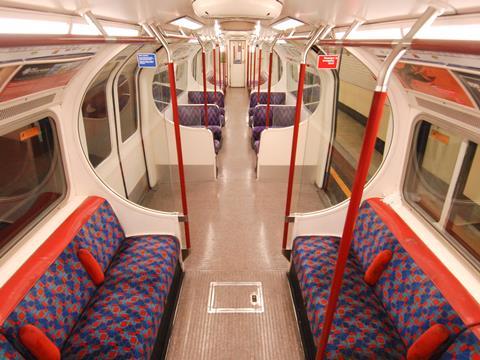
Before the pandemic TfL was highly dependent on fares revenue compared to equivalent transport agencies around the world, receiving no central government funding for day to day operations. It is currently in discussion with the government about a financial sustainability plan, which would reduce this dependency.
TfL has requested £1·6bn in capital funding per year between 2023 and 2030, which would fund improvements such as new trains and signalling.
‘I will keep lobbying the government to deliver a long-term, viable funding model for TfL, which would enable us to carry out more upgrades to the network’s ageing infrastructure, boost our economy and deliver a green recovery for London and the wider country’, said Khan.



